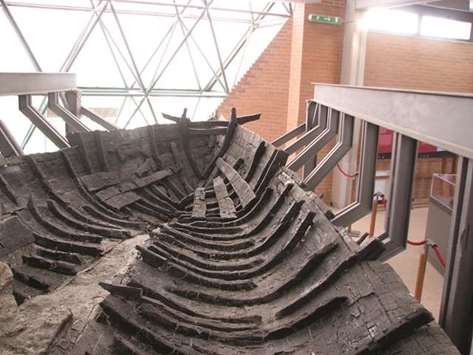A skull that has been lying for decades in an obscure Italian museum may be finally identified as belonging to 1st-century scholar Pliny the Elder, who died almost 2,000 years ago trying to rescue people from the volcano eruption that destroyed Pompeii.
Pliny is known as the author of Natural History, one of the world’s most ancient encyclopaedic works. He was also a naval commander, who mobilised an entire fleet to pick up survivors from the 79 AD natural disaster.
“I have been working on this for 30 years,” military historian Flavio Russo tells dpa. “We cannot have absolute certainty, but we have lots of convincing clues, and more tests may give us a near-definitive answer,” he adds.
Professor Isolina Marota, an anthropologist from the University of Camerino who studied the famous 5,000-year-old Oetzi the Iceman mummy from South Tyrol, has offered to conduct tests on the skull’s teeth and compare its shape against known portraits of Pliny.
Scientists can compare isotopes contained in tooth enamel with isotopes from the soil of a specific region. If isotopes from the Rome skull match with samples from Pliny’s birthplace in Como, a lakeside city 50 kilometres north of Milan, the mystery would be considered solved.
The same procedure is what allowed scientists to pinpoint the Alpine valley Oetzi came from, and it should cost no more than 10,000 euros (11,860 dollars). Several public and private donors offered to chip in after a fundraising appeal was published in a newspaper.
If a connection can be confirmed, the skull would be “the world’s only [identified] human relic from ancient Rome,” Andrea Cionci, an art historian and freelance journalist who penned the La Stampa appeal, tells DPA.
Pliny was born in 23 AD, and most of what we know about him comes from the letters of his nephew, Pliny the Younger. He wrote that his uncle died on the beach of Stabiae, overwhelmed by poisonous gas from the nearby Mount Vesuvius volcano.
According to Russo, Pliny the Elder’s actions following the Pompeii disaster qualify as “the first-ever civil protection operation.” He detailed Pliny’s actions and the operation in a 2014 book published by the Italian Army’s chief of staff.
Russo believes Pliny rushed to the scene after being alerted via homing pigeon or smoke signals by a local matron, Rectina, who may have been his lover. He mobilised a dozen ships, powered by about 2,500 oarsmen, and saved roughly 1,000 people, including Rectina.
“My book is not just about military history, it is also a love story,” Russo tells DPA. “I figure that if Pliny went through all that effort, he and Rectina must have been remarkably close, to say the least.”
Pliny’s presumed remains were found in the early 20th century among 73 skeletons. One of the skeletons had been separated from the others and was decorated with precious jewellery, including a gold necklace and rings, and a sword with ivory and seashells.
The engineer who led the dig, Gennaro Matrone, made the link to Pliny, but a leading archaeologist told him that a Roman admiral would not be dressed up as a “cabaret ballerina.”
Later studies revealed that such decorations were common for people of Pliny’s rank.
Matrone was allowed to keep the jewels, which he sold, and donated the skull to an army general, who later entrusted it to the National Historic Museum of Healthcare Art, where it is still on display.
The skull has been left “more or less forgotten in a corner” of the museum, which “is very interesting but a bit creepy, as its collection includes stuff like maimed embryos,” Cionci says. – DPA

The remains of a rescue ship that supposedly belonged to the fleet commanded by Pliny the Elder to rescue people from the volcano eruption that destroyed Pompeii is on display at Rome’s National Historic Museum of Healthcare Art.


